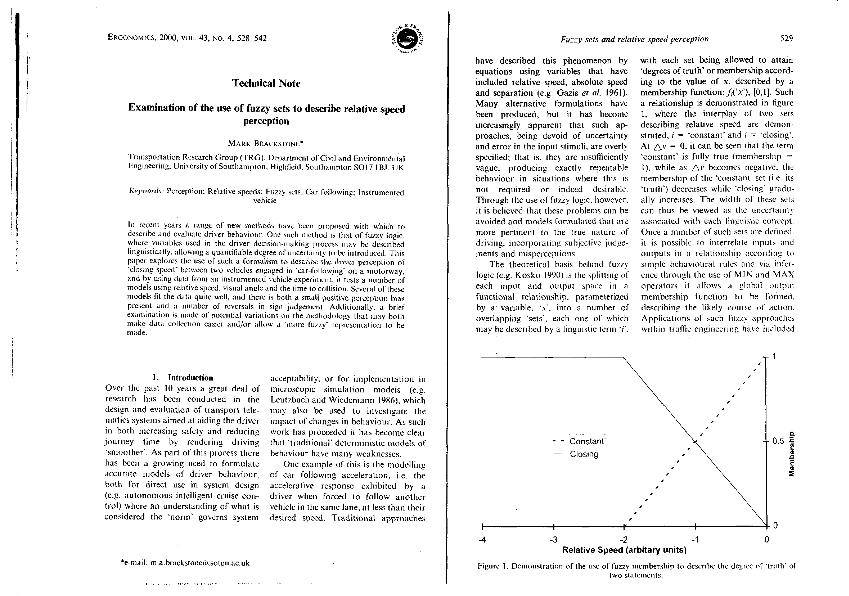Examination of the use of fuzzy sets to describe relative speed perception

Contenido multimedia no disponible por derechos de autor o por acceso restringido. Contacte con la institución para más información.
| Tag | 1 | 2 | Valor |
|---|---|---|---|
| LDR | 00000nab a2200000 i 4500 | ||
| 001 | MAP20071503438 | ||
| 003 | MAP | ||
| 005 | 20080418123826.0 | ||
| 007 | hzruuu---uuuu | ||
| 008 | 030320e20000401gbr|||| | |00010|eng d | ||
| 040 | $aMAP$bspa | ||
| 084 | $a875 | ||
| 100 | 1 | $0MAPA20080156206$aBrackstone, Mark | |
| 245 | 1 | 0 | $aExamination of the use of fuzzy sets to describe relative speed perception$cMark Brackstone |
| 520 | 8 | $aIn recents years a range of new methods have been proposed with which to describe and evaluate driver behaviour. One such method is that of fuzzy logic, where variables used in the driver decision-making process may be described linguistically, allowing a quantifiable degree of uncertainty to be introduced. The article explores the use of such a formalism to describe the driver perception of closing speed between two vehicle engaged in car-following on a motorway, and by using data from an instrumental vehicle experiment, it test a number of models using relative speed, visual angle and the time to collision | |
| 650 | 1 | 1 | $0MAPA20080557621$aConductores |
| 650 | 1 | 1 | $0MAPA20080553715$aConducción |
| 650 | 1 | 1 | $0MAPA20080555818$aPercepción |
| 650 | 1 | 1 | $0MAPA20080588366$aTiempo de reacción |
| 650 | 1 | 1 | $0MAPA20080600389$aComportamiento humano |
| 650 | 1 | 1 | $0MAPA20080573539$aPsicosociología |
| 650 | 0 | 1 | $0MAPA20080570569$aSeguridad vial |
| 650 | 1 | 1 | $0MAPA20080550653$aErgonomía |
| 740 | 0 | $aErgonomics | |
| 773 | 0 | $tErgonomics$dLondon and Washington$gVol. 43, nº 4, April 2000 ; p. 528-542 |

